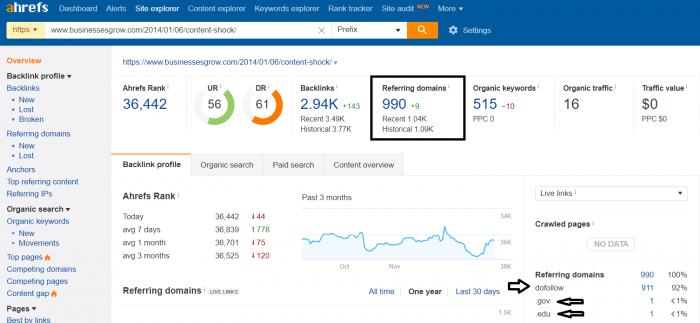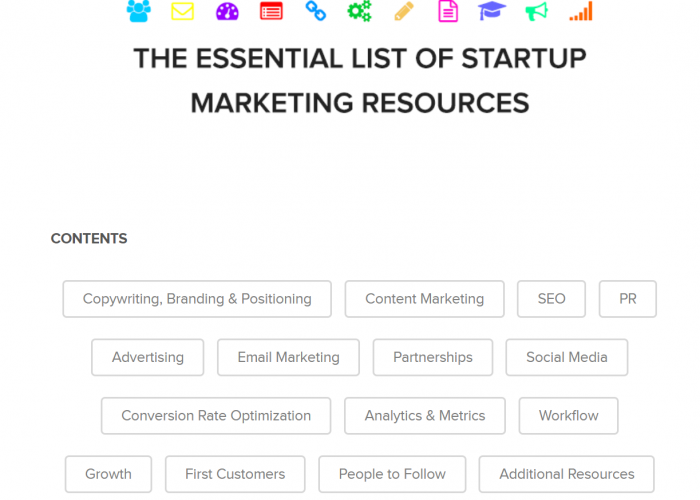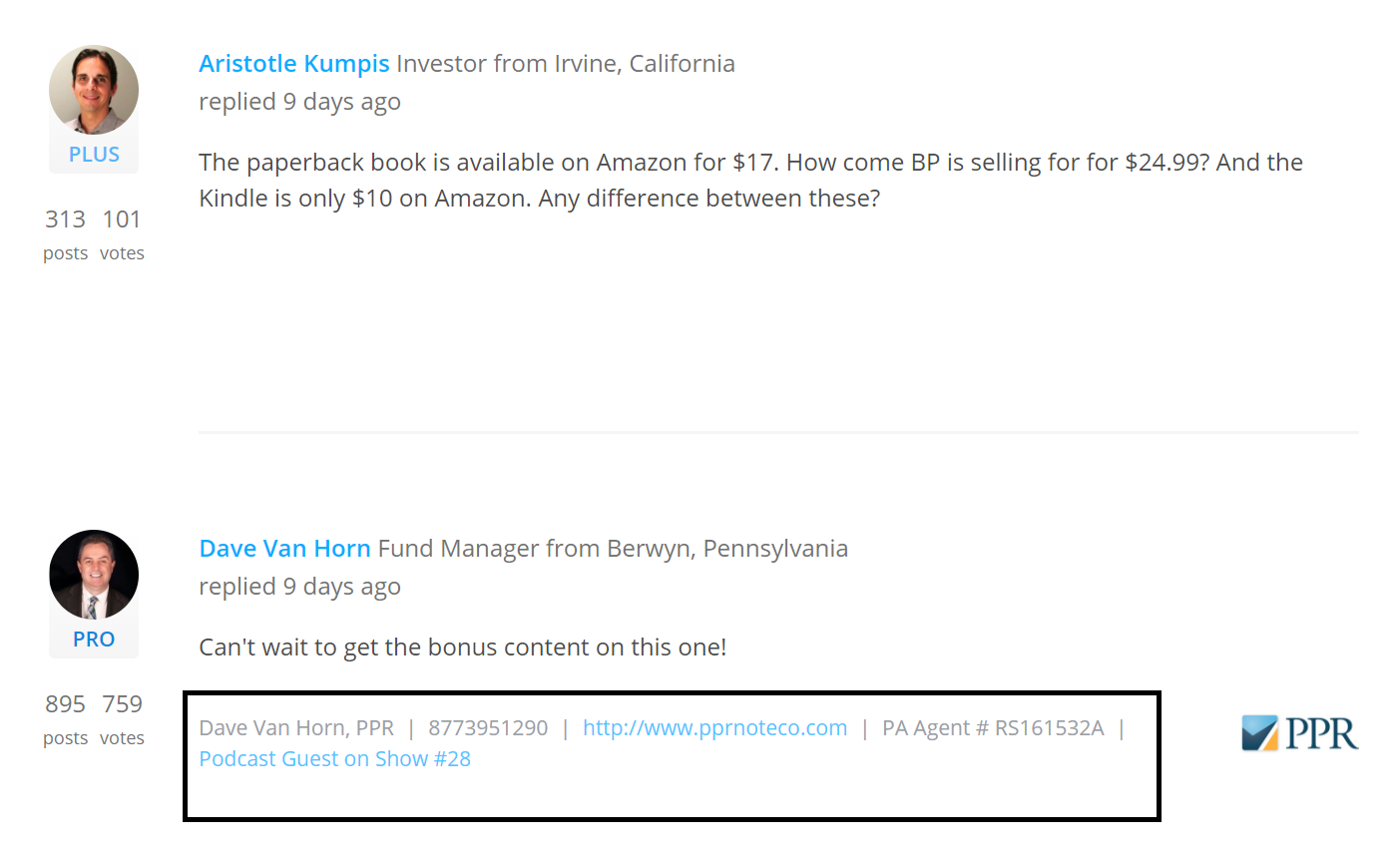You drafted that killer blog post.
You poured your heart and soul into the piece.
10, 20, 30 hours of work. All for nothing?

Content promotion needs to be a part of your marketing mix – If you don’t put 2X as much effort into promoting that piece of content as you do creating it, then you’re missing out on a ton of exposure.
Today we’re going to dive deep into the art of blog post promotion strategies. These aren’t original ideas and that’s OK — the fundamentals of content promotion are arguably the most important to master.
Traffic Leaks
The term “traffic leaks” means taping other established websites for traffic. It is undoubtedly the easiest, fastest, and the most effective way for driving targeted traffic to any website in the short-term. It is not necessarily as “passive” as other methods of traffic generation like SEO, Social, or paid media… but those methods also require massive amounts of time or money to see immediate results.
Most beginner marketers take the absolute wrong approach to content promotion. They typically write content and do no promotion (which leads to barely any growth). Search engines might *find* your content, but they won’t send thousands of targeted visitors without your site already having massive authority.
On the other hand, many marketers try to generate traffic by paying for it from day one. This approach can work, but it is costly, and an inefficient use of resources until you’ve figured out the optimal content marketing strategy for your business.
So what’s the smart way to promote content?

Introducing traffic leaks, the way to generate lots of targeted traffic without spending a penny.
Your target audience is already out there… surfing their favorite forums, blogs, and channels. Now it’s your turn to grab some of that traffic and divert it towards your site.
All credit for the original idea behind Traffic Leaks goes to CCarter of WickedFire.
1) Niche Relevant Forums
One of the best places to find your target audience is niche forums. For example, if you run a supplement company, you better have a presence on bodybuilding communities (web forums, subreddits, Facebook groups, LinkedIn groups).
Go out there and join the conversation. It’s as simple as doing a google search: “bodybuilding + forums…”
The key to this method: You need to give before you get.
Contribute to the conversation for a few weeks (months would be better) before you even mention your site. Contribute awesome content for a few weeks: this means answering questions that people have, and even compiling interesting information and posting it. You’re positioning yourself as an authority on the subject matter. The idea is that after a few weeks you’ll be respected and people will back-up what you have to say.
Now, after you’ve established your reputation, is your chance to start reaping the rewards of a killer “traffic leak.” Continue compiling awesome content (things like how-to posts, ultimate guides, whatever content that community will figuratively eat up) but mark it with your brand.
End your thorough posts with a signature, a link back to your site with your name.
People will notice — you don’t need to be overwhelmingly obvious.
You can link to relevant pieces of content on your own site (whether that’s for a more in-depth explanation or just complementary content). If you want to take this method to the extreme… after many months of developing your authority on the forum, host a giveaway. (Obviously, make sure you’re following the rules of the forum.)
Put together a giveaway with built-in viral marketing. Offer some sort of amazing prize (continuing with the example, that could be a few hundred dollar’s worth of supplements), and just ask for an email to enter the competition. Allow the participants to share your giveaway with friends for additional entries into the competition (things like tweets, likes, additional referral traffic sent to their content “affiliate” links).
Get creative and reap the rewards of authority.
2) Create Drama
Stir up some drama. Be extremely polarizing and write a compelling blog post staunchly against a well known “influencer” in your market. That could be a blogger, a company, or just a well-known celebrity in your market. Then share the hell out of that post, tweet it out to the person you’re targeting, their fans, email bloggers… just generally get the word out.
This is an effective form of “link bait” because by essentially baiting influencers into a digital argument, you’re drawing eyes to your page and in turn links.
The good news is that most sites will link to your original article to explain the purpose of their rebuttal. This doesn’t have to be done in a sleazy manner — it could be as simple as pointing out a true problem in your marketplace that no one wants to mention.
A good example of this is Mark Schaefer post from a few years ago titled “Content Shock – Why Content Marketing is Not a Sustainable Strategy.”
Soon after creating the post, content marketing experts like Joe Pulizzi and Shel Holtz, among many others, wrote their own posts to counter/discuss Mark’s post.

BE the person to break that story.
3) Blog Comments
Similar to the drama method above, blog commenting is another killer way to drive traffic. Most people do this completely wrong, and in turn waste all of their effort to produce almost no traffic.
When you comment on other blogs to drive traffic you need to:
- Be one of the first few commenters
- Post a polarizing response (you need an OPINION, or else you’re just adding “fluff”)
- Mention the author of the blog post in the comment
- Link out to a relevant piece of content on your site (something that adds value)
- Sometimes, it’ll be smarter to link to other relevant websites
- No one likes a self-promoting monkey that never “shares the love”
Post a killer comment that evokes emotion and demonstrates your authoritative view on the subject. Make use of knowledge gaps to create curiosity so that people will check out your website to learn more about you.
4) Q&A Sites
There are tons of question and answer type websites that are filled with your target audience. There are the more broad websites like Yahoo Answers or more targeted ones like Quora. (Keep in mind, you can get by with low-quality “spam” answers on the former, but the latter requires a lot more finesse.)
Your best bet, regardless, is to find questions that your target audience is asking and answer them to the fullest extent of your knowledge and then link back to your blog.
To really super-charge this promotion method, first search out some questions that require more detailed answers, and write a short ~500 word blog post for each one. Then go in and answer the question while leaving a link back to that new post you created — for “more information.”
Now you’ve created content that you KNOW your audience is already looking for, you’ve got a traffic leak setup (a percentage of the people who view that Q&A page will click through to your site), and you’ve got a niche-relevant contextual backlink to your site for SEO. It’s the trifecta of content marketing success.
5) Watermarking Images
This is an older method of traffic generation that has never stopped working… it just fell out of popularity. The google image search is a huge traffic generator for “big business” websites and large-scale content marketers. Similarly, people will type in your website if the image was interesting or aroused their curiosity.
There are two different ways you can go about this. One is just grabbing tons of images from google, or a free photo site, and slapping your watermark on there. Another is to create your own images in photoshop (things like relevant quotes, pictures, snapshots of relevant places etc.) This is more time consuming, but doesn’t break any copyright laws.
When you use watermarked images for your blog posts, they will get taken by other bloggers and reused (generating type-in traffic), picked up by search engines (type-in traffic), and will also appear on any sites that steal your content directly without attribution.
Another way to get more mileage out of your images is to distribute them all around — the easiest places are social sites like Twitter, Facebook, Instagram, Reddit, or Pinterest.
6) Guest Posting
Reach out to relevant websites in your vertical. Build a relationship with the editors and bloggers through email, social media, comments… whatever channel works best with your personal skills.
Ask if you can put together an awesome piece of content for their site. If they question your motives, explain that they have a different audience than you and you’d like to reach them — all you want in return for your awesome content is attribution and a link back to your site.
This is a really simple strategy but it seems to have fallen out of favor ever since “guest post armageddon” when Matt Cutts said “guest posting is done.”
Sure, if you’re using guest posts as just another SEO technique to get backlinks, then you’re probably wasting your time.
The key to mastering the guest post and getting max value: Understand the blog and the target audience that you’re writing for. Once you have that figured out, it’s time to write something of value that shows off your expertise and really helps the readers.
Now instead of just linking to your homepage in the guest post, add a specific call to action at the end of the post sending traffic to a brand-new landing page that hosts gated content that’s a continuation of your guest post.
Boom!
Email subscribers galore.
That’s on top of building brand awareness for your blog. And of course, as an added bonus, by getting a link back, you get some SEO help (but again, the sole purpose of guest posting shouldn’t be for SEO).
Take a look at this example from a guest post Laura Lopuch did on Kissmetrics titled “Persuasive SaaS Onboarding Emails: 10 Conversion Lessons Stolen From Attorneys.”
Clicking on the link in her bio box takes you to a landing page that was specifically created for her post on Kissmetrics.
7) Social Media Promotion (More Than the Basics)
A lot of people don’t realize the massive potential of social media promotion… no I don’t mean posting a link of your latest blog post on twitter, facebook, etc.
Find the social media communities in your marketplace and promote your best content there.
For startups and entrepreneurial content, that could be Hacker News, /r/entrepreneur, or special LinkedIn groups for your market.
For more general content sites that have a large target demographic, that means StumbleUpon, relevant subreddits, and other niche forums.
For the most part (outside of the marketing world), people LOVE to consume content that interests them. You’ll find that people thank you for writing that blog post, instead of complaining that you’re inundating them with “blog spam.”
Take advantage of this by segmenting your customers to find the appropriate marketing… doing this will make content marketing 10X easier for you.
8) Resource Pages
These are another underutilized source of traffic. There are many sites out there dedicated to organizing and promoting content producers. If you’re creating awesome content you need to get the word out.

Some searches that you can use to try and find resource pages:
- Keyword + “resources”
- Keyword + “useful resources”
- Keyword + “helpful resources
- Keyword + “links”
- Keyword + “useful links”
- Keyword + “helpful links”
You can also make use of the AROUND modifier. AROUND(Number) allows you to find specific strings of text that are within proximity to the number specified in the AROUND modifier.
9) The Duplicate Content Marketing Strategy
You’re probably underutilizing your content.
Let me explain: When you write a killer blog post you’ve put in a ton of front-end work that will never see the light of day. The research, the planning, organizing the information, etc. There’s no reason why you can’t repurpose the data and conclusions that you present in one blog post into another content format.
Take some of your best blog posts and use the following strategies to repurpose your content:
- Free reports – This is as simple as grabbing the text from your post, and turning it into a more formal PDF that you can giveaway for an email (or just publish on document sharing sites for links + traffic).
- Slideshares – Create a killer slideshare presentation from your blog post and then promote it to the same communities as before (just give it a few months). You’ll reach a new audience and drive more traffic with minimal additional work.
- Videos – Don’t neglect the enormous search engine that is Youtube (the second largest search engine in the world!). Turn all of your blog posts into short 2-5 minute videos. Some people would prefer to consume your content in a visual way, AND you’ll get the benefit of any internal Youtube search traffic.
- Podcasts – Similar to the video method above, don’t neglect the massive traffic available from podcasting. The iTunes (along with other) podcasting community is growing in size massively every month, and it’s only getting larger. Turn your blog content into podcasts and then insert calls to action leading back to the original page on your site.
- Images – Take a few of the biggest “takeaway” points from your content and turn that into shareable graphics. (Things like memorable quotes or interesting conclusions.) Then promote these on forums/social media with a link back to your original post… make sure to watermark it too!
- Syndication – Syndication can be good if the site uses a rel=canonical tag to point back to you as the original source (example – com). However, if a site doesn’t use a rel=canonical tag, then you should think carefully about syndication as it’s possible that you’ll be outranked from the syndicated site (if you don’t care, then you can use syndication as an opportunity to get additional links – for example, look at the following blog post on UpWork).
To further this idea, you can even offer these secondary content elements alongside your blog posts for additional social shares.
For example, take your blog posts and turn them into “printable PDF’s for future consumption” and put them behind a social share content locker, so that people can download those PDF’s as long as they give you a tweet or other social share.
Things like resource lists, free reports, or even minor case-studies work great for this.
10. Paid Media
As Digital Marketer Chris Von Wilpert said, “Paid advertising to content is going to be “the future” of digital marketing.”
You can use paid content promotion services like Outbrain — or purchase ads on social networks like Facebook and LinkedIn or on relevant blogs/communities to drive traffic back to your blog posts.
It’s most likely worth at least a small investment to test how well your blog posts perform when you put up a small ad on a Facebook, a subreddit or community that contains your target audience.
You can collect data, conversion metrics, and even scan the comments on your blog post to get more ideas for further content marketing. It might even be worth it to survey your list after collecting some subscribers, to further your content strategy.
The one issue here is that if you’re paying for the clicks, you need to be extremely efficient in monetizing and converting those people.
11. Work with Micro-Influencers
This strategy will likely cost you some money but can be well worth it.
Unlike working with large influencers, working with a few micro-influencers is a more affordable solution and potentially gives you the opportunity to reach an audience similar in size to a larger influencer.
Not only that, but typically micro-influencers have more targeted and engaged followers which means a higher percentage of people potentially interested in your content (assuming you segmented your customers properly).
Now Get Out There And Start Promoting!
If there’s only one important takeaway that you get from this post it should be the following— you need to be actively promoting your content in order to get maximum exposure.
Don’t just sit back and hope Google throws you some free SEO traffic.
Don’t be content with your current traffic statistics.
Work hard and promote that content, increase your authority and generate massive traffic for free (or pay for it :).
Find a Home-Based Business to Start-Up >>> Hundreds of Business Listings.

















































